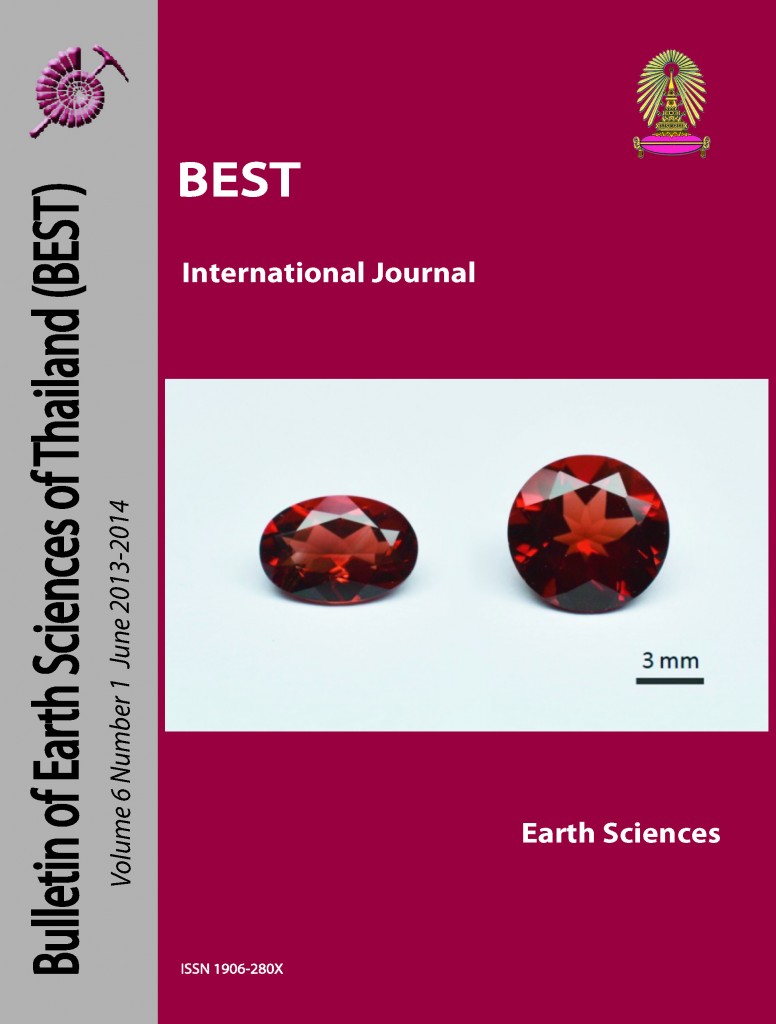Petroleum Hydrocarbon Contamination of the Environment: A Case Study
Main Article Content
Abstract
Hydrocarbon contaminated soils were investigated to assess the level of pollution. The physicochemical properties, trace metals and total petroleum hydrocarbon content of soil samples were determined in the laboratory by extraction and spectrophotometric techniques. Total petroleum hydrocarbons levels in soils under investigation were measured as high as 9.84 ×103 mgkg-1 for soils under investigation. Multivariate
statistical method was employed to evaluate the level of pollution of hydrocarbon contaminated soils. Principal component analysis carried out on soil showed that the eigenvalues of the two first principal components represent up to 67.2% of the total variance. A positive correlation of the first principal component with Cu, Cr, V, cation exchange capacity and total petroleum hydrocarbon shows pollution from oil spillage while correlation of the second principal component with Cr, Fe, V and DO shows both oil pollution and allochthnous inputs Cluster analysis shows that at about 68.56% similarity, all variables reveal a common source.
Article Details

This work is licensed under a Creative Commons Attribution-NonCommercial-NoDerivatives 4.0 International License.
Copyright © 2008 Department of Geology, Faculty of Science, Chulalongkorn University. Parts of an article can be photocopied or reproduced without prior written permission from the author(s), but due acknowledgments should be stated or cited accordingly.
References
Amadi, A., Dickson, A. and Maate, G.O. 1993. Remediation of oil polluted soils: Effect of organic and inorganic nutrient supplements on the performance of maize (Zea may L.). Water air soil pollution. 66: 59 – 76.
Boyacioglu, H, and Boyacioglu, H. 2007. Water pollution sources assessment by multivariate statistical methods in the Tahtali Basin, Turkey. Environ Geol 54: 275–282
Department of Petroleum Resources (DPR) 1991. Environmental Guidelines and Standards for Petroleum Industries in Nigeria. Lagos 30 – 45
Ezebuiro, P. E. 2004. A review of effect of oil pollution in West African environment. Journal Dis. environ. 1: 62 – 68.
Odokuma, L.O. and Okpokwasili, G. C. 1993. Seasonal ecology of hydrocarbon utilizing microbes in the surface water of a river: Environmental Monitoring and Assessment. 27:175 – 191.
Onojake M.C., Ukerun, S.O. and Iwuoha, G. 2011. A Statistical Approach for Evaluation of the Effects of Industrial and Municipal Wastes on Warri Rivers, Niger Delta, Nigeria: Water Qual Expo Health. 3: 91– 99.
Osuji, L. C. and Onojake, C.M. 2004. Trace Heavy Metal Associated with Crude Oil: a Case Study of Ebocha- 8 Oil – spill Polluted Site in Niger Delta, Nigeria: Chemistry and Biodiversity. 1:1708 – 1715.
Osuji, L. C. and Ezebuiro, P. E. 2006. Hydrocarbon contamination of a typical Mangrove floor in Niger Delta, Nigeria: International Journal of Environmental Science Technology. 3 : 313–320.
Pradhan U. K., Shirodkar, P.V. and Shahu, B.K. 2009. Physicochemical characteristic of the coastal water off Devi estuary, Orissa and evaluation of its seasonal changes using chemometric techniques. Current Science. 96:1203–1209.
Sekabira K. H., Origa, O., Basamba, T. A. Mutumba, G. and Kakudidi, E. 2010. Heavy metal assessment and water quality values in urban stream and rain water: International Journal Environmental Science and Technology. 7:759–770.
Xiaoyun, F. C., Baoshan, Z., Hui, Z., Zhiming, Y. and Honggang, Z. 2010. Assessment of river water quality in Pearl River Delta using multivariate statistical techniques. In: International society for environmental information sciences 2010 annual conference (ISEIS) procedia environmental sciences., 2: 1220–1234.
Zhang, Q., Zhongwu , L., Guangming , Z., Jianbing , L., Yong , F., Qingshui, Y., Yamei, W. and Fangyi, Y. 2009. Assessment of surface water quality using multivariate statistical techniques in red soil hilly region: a case study of Xiangjiang watershed China. Environmental Monitoring and Assessment. 152:123–131


